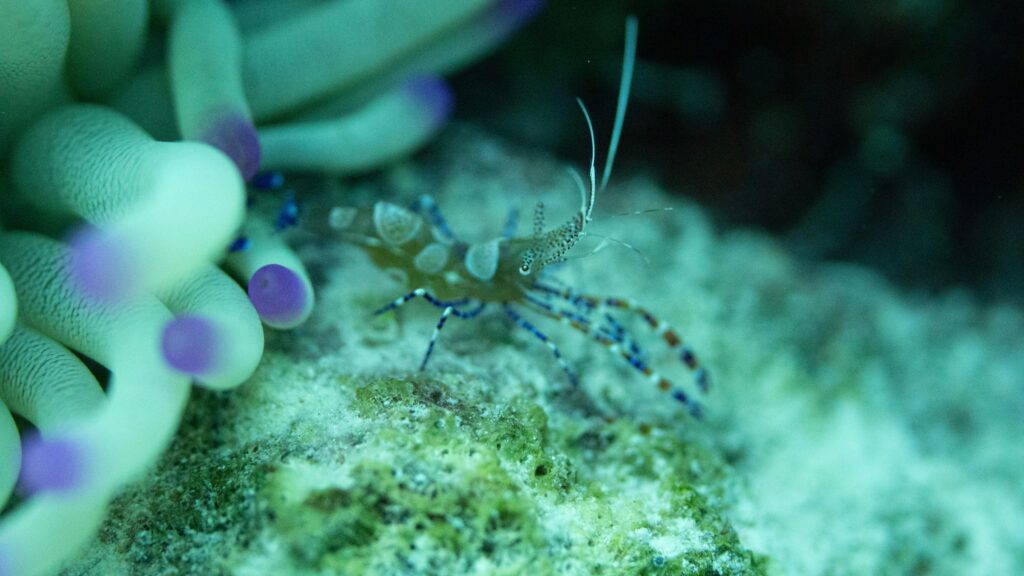In the hidden depths of ponds and streams across the Americas lives a remarkable hunter that defies the laws of physics as we understand them. The aquatic pistol shrimp, particularly the mantis shrimp, possesses a biological mechanism so powerful that it creates an actual sonic boom underwater—a feat that would seem impossible to many engineers. This extraordinary creature can snap its specialized claw with such velocity that it generates a cavitation bubble, which upon collapse produces one of the loudest sounds in the animal kingdom, accompanied by a flash of light and temperatures approaching those found on the sun’s surface. The following exploration takes us into the underwater world of one of nature’s most fascinating evolutionary marvels: an insect-sized creature that literally breaks the sound barrier in its watery domain.
The Remarkable Mantis Shrimp: Not Actually an Insect
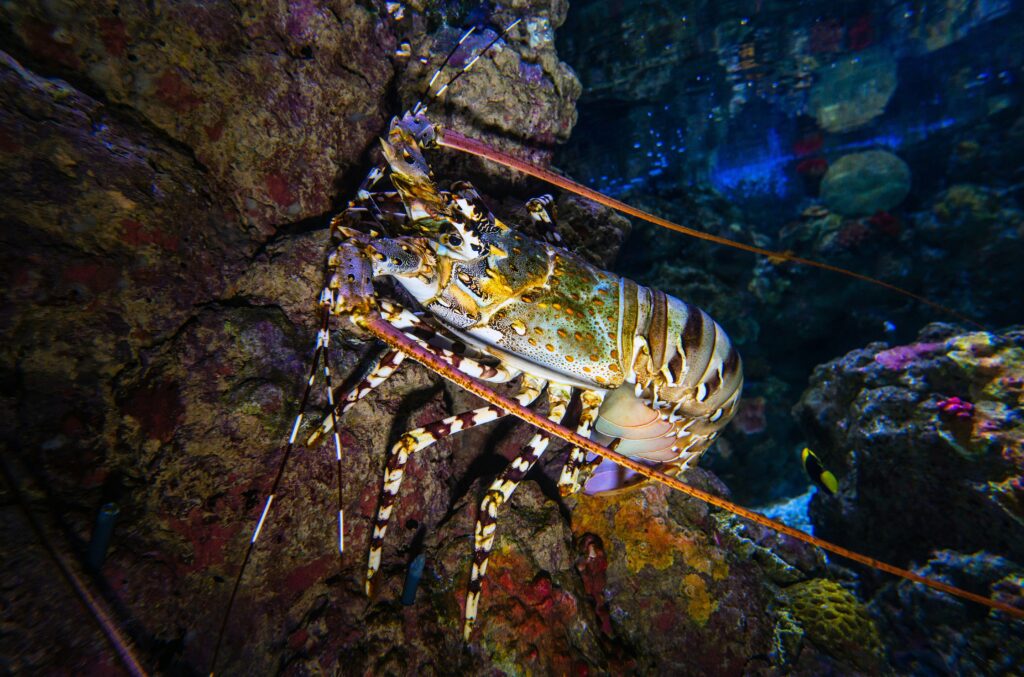
Despite the common misconception suggested by the article title, the mantis shrimp is not technically an insect but rather a marine crustacean belonging to the order Stomatopoda. These colorful underwater warriors grow to about 4-12 inches in length and are distant relatives of crabs and lobsters. With over 450 known species, mantis shrimps have established themselves in tropical and subtropical waters worldwide, particularly in coral reef environments. Their misleading name comes from their physical resemblance to both mantises (in their forearms) and shrimps (in their overall body structure), though they constitute their own distinct evolutionary branch that diverged from other crustaceans hundreds of millions of years ago.
The Speed Champion of the Animal Kingdom

The mantis shrimp’s striking appendage moves at a truly mind-boggling speed, making it one of the fastest movements in the entire animal kingdom. This specialized limb, called a dactyl club in “smashers” or a spearing appendage in “spearers,” can accelerate from rest to over 50 mph in just three-thousandths of a second. To put this extraordinary speed into perspective, if a car could accelerate at this rate, it would reach a velocity of 0 to 60 mph in just a fraction of a blink. This movement is so rapid that it actually exceeds the speed at which nerve impulses can travel, requiring the shrimp to employ a specialized latch-like mechanism that stores energy before explosive release, similar to a cocked crossbow.
The Physics Behind the Underwater Sonic Boom

The phenomenal speed of the mantis shrimp’s strike causes something remarkable in the water surrounding it—a process known as cavitation. As the club accelerates through the water, it creates an area of low pressure behind it that causes the water to actually vaporize into a cavitation bubble. When this bubble subsequently collapses, it releases an enormous amount of energy in the form of sound, light, and heat in a process called sonoluminescence. This collapse happens with such force that it creates a shockwave comparable to a sonic boom, with pressures reaching thousands of pounds per square inch. Scientists have measured these tiny underwater explosions at approximately 218 decibels—louder than a gunshot and powerful enough to break glass aquarium walls if the shrimp is kept in captivity.
The Hottest Spot in the Ocean

Perhaps the most astonishing aspect of the mantis shrimp’s cavitation bubble is the extreme temperatures it momentarily generates. Upon collapse, the gas inside the bubble is compressed so rapidly that temperatures briefly reach an estimated 8,000 degrees Fahrenheit (4,400 degrees Celsius)—nearly as hot as the surface of the sun. This heat is contained within an area smaller than the head of a pin and lasts for just microseconds, creating one of the most extreme microenvironments on Earth. These temperature spikes are so intense that they produce plasma, the fourth state of matter, within the water itself, which accounts for the flash of light (sonoluminescence) that accompanies each strike, effectively turning the shrimp into a living underwater flashlight.
Evolutionary Arms Race: Why Develop Such Power?
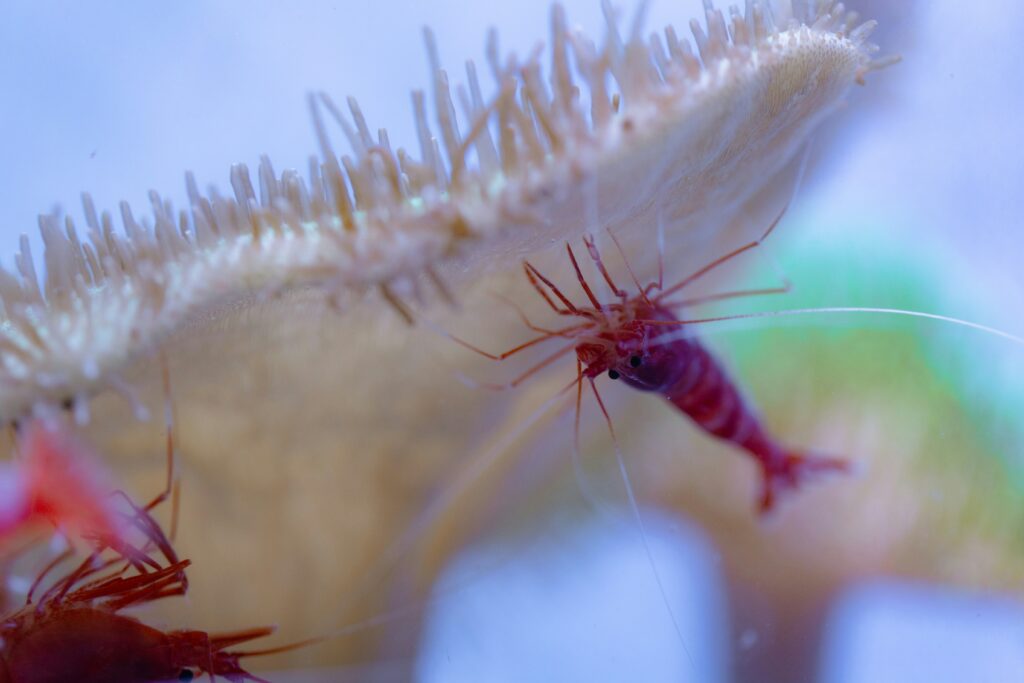
The mantis shrimp’s supernatural striking ability is the product of millions of years of evolutionary pressure in the highly competitive coral reef environment. For “smasher” species, this weapon allows them to crack open the hardened shells of clams, snails, crabs, and other well-defended prey that would be inaccessible to other predators of similar size. The spearing varieties use their equally fast but differently shaped appendages to impale soft-bodied prey like fish with similar efficiency. This adaptation represents an evolutionary arms race between predator and prey—as prey species evolved stronger defenses, the mantis shrimp evolved more powerful weapons. The incredible specialization of the striking appendage demonstrates how extreme selective pressure can push biological systems to develop capabilities that seem to approach the limits of physical possibility.
Built-In Impact Resistance
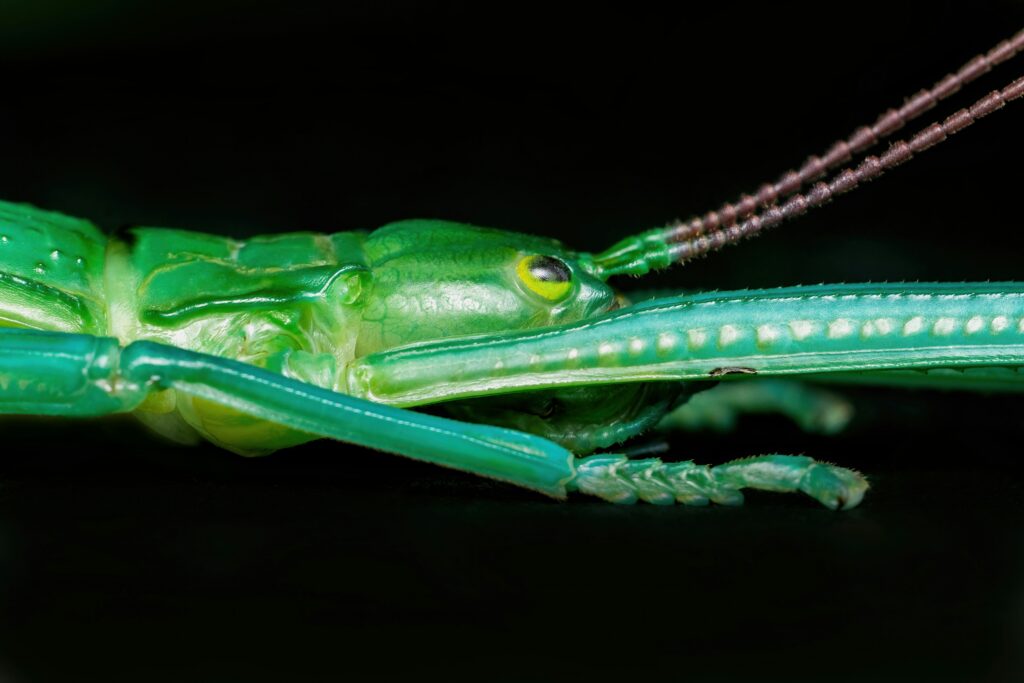
To withstand the incredible forces of its own strikes, the mantis shrimp has evolved specialized material properties in its hammer-like appendage. The outer layer of the dactyl club is composed of hydroxyapatite crystals, the same mineral found in human teeth, arranged in a complex herringbone pattern that distributes impact forces and prevents cracks from propagating. Beneath this lies a region of chitin fibers arranged in a helicoidal structure, similar to plywood, which absorbs energy and further prevents damage. These specialized materials allow the mantis shrimp to deliver thousands of powerful blows without damaging its own weapon—a feat that has inspired materials scientists to develop new impact-resistant materials for human applications like body armor, sports equipment, and aerospace components.
Unparalleled Visual System
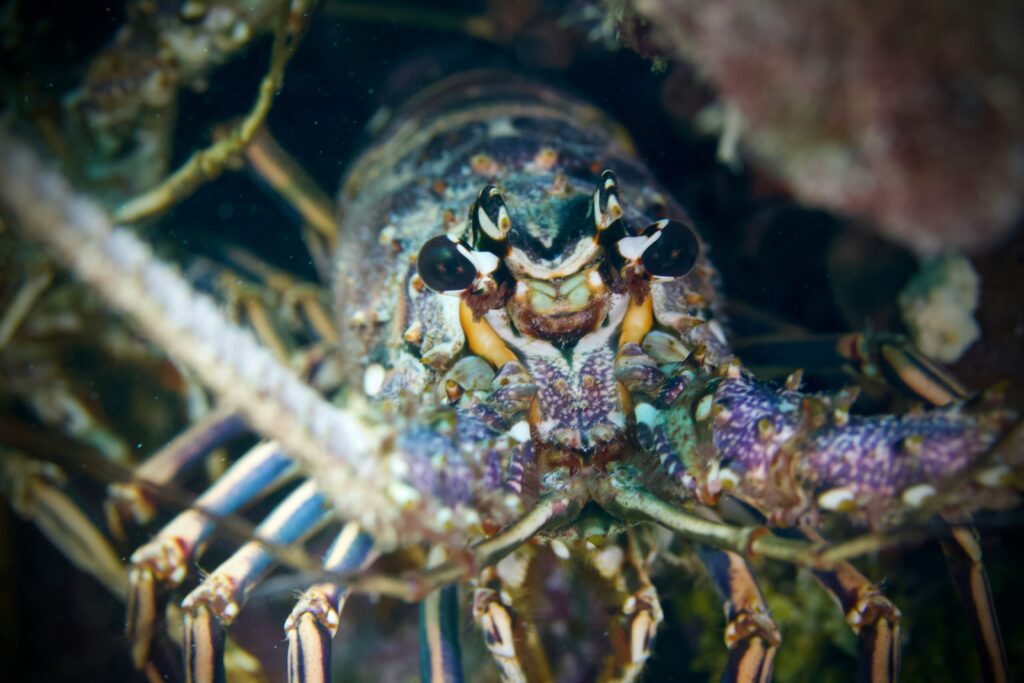
Complementing its remarkable striking ability, the mantis shrimp possesses one of the most complex visual systems ever discovered. Their compound eyes contain up to 16 types of photoreceptor cells (humans have just three), allowing them to see not only visible light but also ultraviolet light and polarized light. Many species can even detect circular polarized light, a capability found in no other animal. This extraordinary vision helps the mantis shrimp identify prey, navigate its complex reef environment, and communicate with other mantis shrimps through specialized reflective body patterns that are invisible to most other creatures. Their visual processing is so unusual that scientists believe they actually perceive the world in a fundamentally different way than other animals, including humans.
Technological Inspiration: Biomimicry Applications
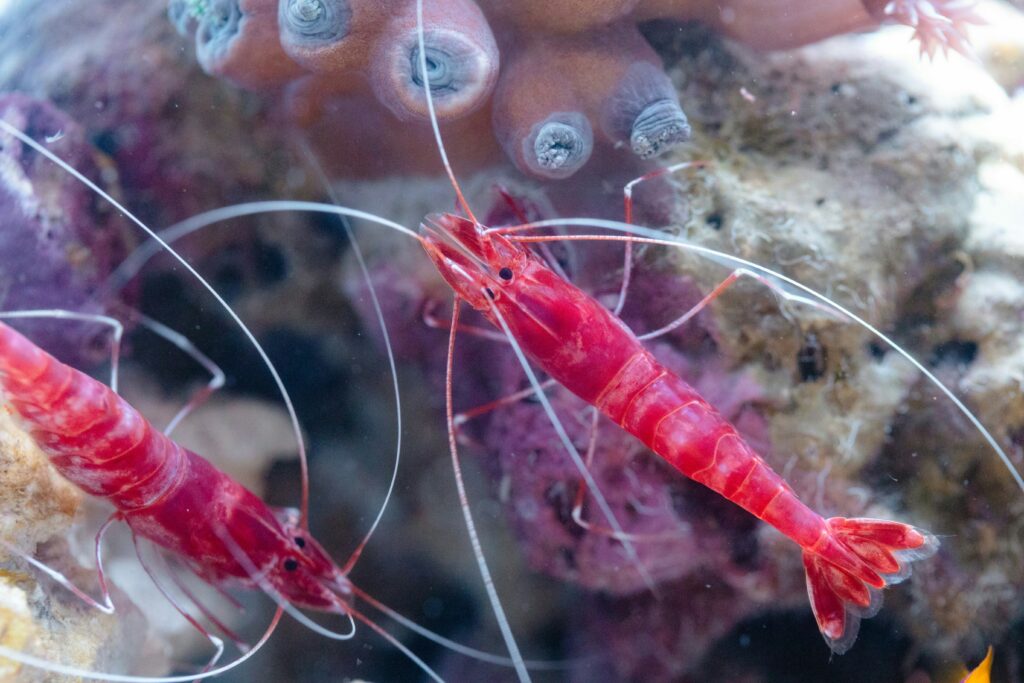
The mantis shrimp’s remarkable abilities have not gone unnoticed by engineers and scientists seeking inspiration from nature. The mechanism behind its high-speed strike has influenced the development of ultrafast actuators and robotics systems that generate explosive force. Materials scientists study its impact-resistant club structure to create new composite materials for applications ranging from bulletproof vests to aircraft components. The shrimp’s cavitation capabilities have inspired new approaches to water sterilization, medical imaging, and even potential cancer treatments that leverage controlled cavitation bubbles. Perhaps most notably, its visual system has led to the development of new camera sensors that can detect polarized light and thus potentially discover cancerous tissues earlier than conventional imaging technologies.
Life Cycle and Reproduction of the Speed Demon
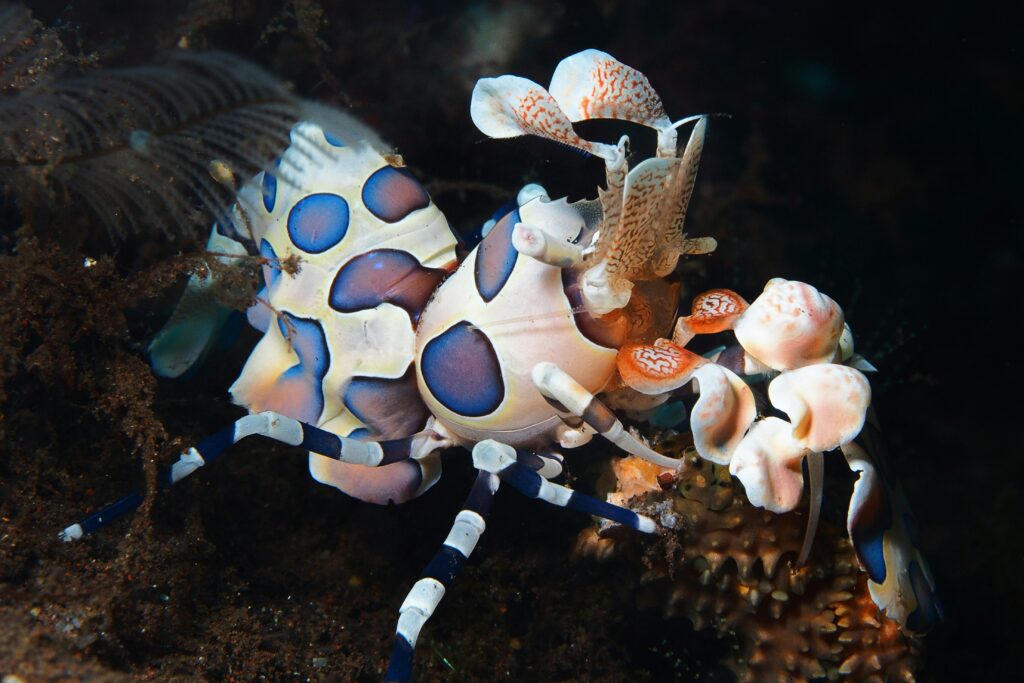
Despite their fearsome hunting capabilities, mantis shrimps display surprisingly complex social and reproductive behaviors. Many species form monogamous pairs and cohabitate in burrows or crevices for extended periods, sometimes for their entire adult lives which can span 3-6 years. During reproduction, females lay eggs and carry them beneath their bodies, constantly aerating and cleaning them until they hatch. The parental investment doesn’t end there—in some species, both parents continue to protect and even feed their young until they are capable of hunting independently. This level of parental care is unusual among marine invertebrates and indicates the mantis shrimp’s high degree of behavioral sophistication, which matches its physical specializations.
Conservation Status and Environmental Threats

While mantis shrimps are not currently considered endangered as a group, they face the same threats affecting coral reef ecosystems worldwide. Climate change-induced ocean acidification weakens the calcium carbonate structures that form their reef habitats, while rising water temperatures cause coral bleaching events that destroy the complex ecosystems they depend upon. Coastal development and pollution further degrade their habitats, while in some regions they face pressure from collection for the aquarium trade or as food items. Their territorial nature and relatively low reproduction rate compared to many marine species means that populations may recover slowly from disturbances, making local extinctions a concern in heavily impacted areas.
Cultural Significance and Ancient Recognition

Throughout history, coastal communities have recognized the unique nature of these creatures despite not understanding the science behind their abilities. In parts of Southeast Asia, mantis shrimps are called “thumb splitters” due to the serious wounds their strikes can inflict on unwary fishermen. Ancient Polynesian cultures included mantis shrimps in their oral traditions, often representing them as warriors or guardians in their stories. In Japanese cuisine, mantis shrimp (called “shako”) are considered a delicacy and are typically served as sushi or tempura. More recently, the mantis shrimp achieved internet fame through a popular comic that humorously exaggerated its capabilities, introducing millions of people to this remarkable creature and turning it into something of a cultural icon among science enthusiasts.
Scientific Discoveries and Ongoing Research
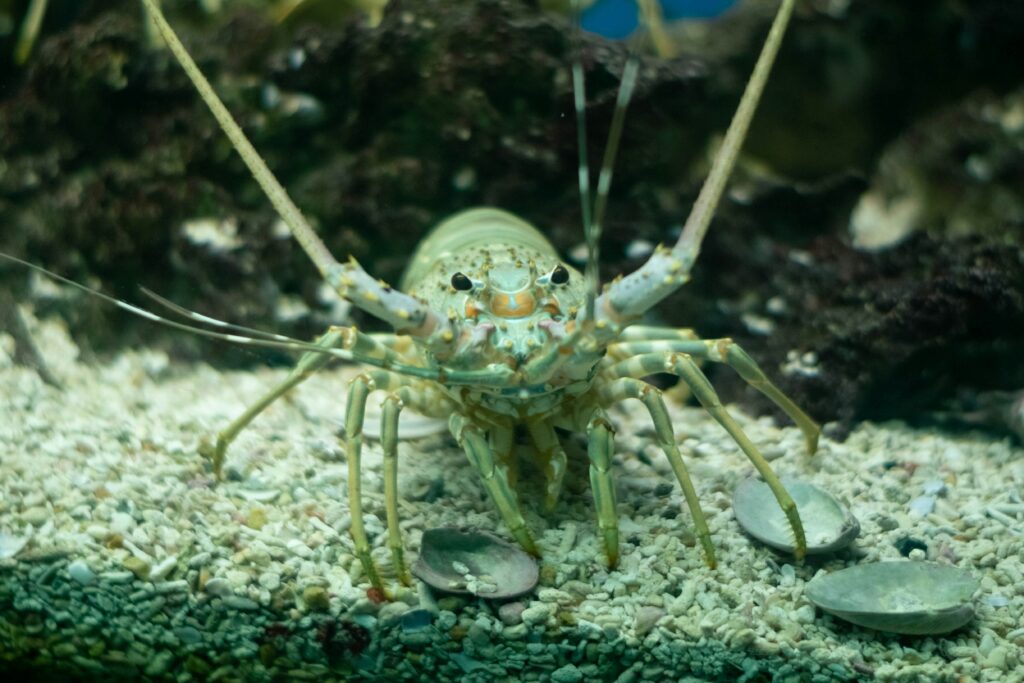
The study of mantis shrimps continues to yield surprising discoveries across multiple scientific disciplines. Recent research using high-speed cameras capturing millions of frames per second has revealed previously unknown details about how the strike mechanism works and how cavitation bubbles form and collapse. Neurobiologists are investigating how the shrimp’s relatively small brain processes its incredibly rich visual information, potentially revealing new paradigms in visual processing. Paleontologists have identified mantis shrimp fossils dating back over 300 million years, suggesting their specialized striking mechanism evolved early and has been conserved through major extinction events. Current research is focusing on the possibility that different mantis shrimp species may have specialized to target specific prey types, potentially explaining the remarkable diversity within this group.
The mantis shrimp stands as one of nature’s most extraordinary achievements—a creature that pushes the boundaries of what biology can accomplish. From generating temperatures as hot as the sun to seeing colors we cannot imagine, these remarkable animals continue to surprise scientists and inspire engineers. Their ability to create underwater sonic booms through sheer biomechanical efficiency demonstrates how evolutionary processes can sometimes develop solutions that seem to defy our understanding of physical limitations. As we continue to study these fascinating creatures, they not only expand our knowledge of marine ecosystems but also provide valuable insights that may help solve human technological challenges, proving once again that some of our most innovative ideas come from careful observation of the natural world around us.

